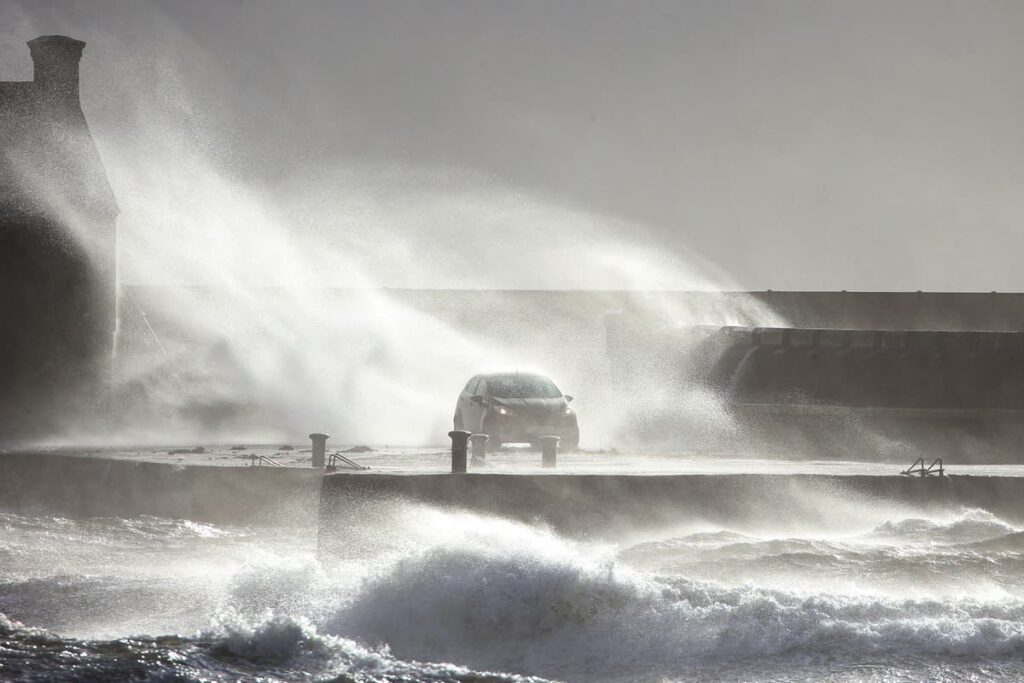With gusts of as much as 85 mph, Storm Floris has prompted an amber wind warning for Scotland.
The amber warning is in place from 10am to 10pm on Monday, whereas a yellow warning is in place for northern England and Northern Eire, from 6am to midnight.
Many trains and boats have already been cancelled, and Community Rail is scheduled to close down many strains on Monday at 12pm. As a result of pace limits, all different routes could have a shorter schedule and lengthier journey occasions.
The sixth named storm of the 2024–2025 season, Storm Floris, is predicted to hit areas of Scotland with “unusually robust” gusts of 80–90 mph.
But what will the other storms be named in the coming months? And how are these names chosen?
Right here’s what you want to know.
What are the storm names for 2024/25?
Full listing of names used for storms in 2024-25
- Ashley
- Bert
- Conall
- Darragh
- Eowyn
- Floris
- Gerben
- Hugo
- Izzy
- James
- Kayleigh
- Lewis
- Mavis
- Naoise
- Otje
- Poppy
- Rafi
- Sayuri
- Tilly
- Vivienne
- Wren
The title Floris is of Dutch origin and can be used a variant of the French title Florence.
Floris comes from the Latin phrase florens, that means to “prosper” or “flourish”. The County of Holland had 5 highly effective monarchs who additionally glided by the title Floris.
Storm Floris is the sixth named storm of the 2024/2025 Storm Naming season. Storm Éowyn – which occurred in late January – was the final named storm to have an effect on the UK.
Conall will comply with Ashley and Bert
Met Workplace
Why are there no storms named with the letters Q, U, X, Y, and Z?
Solely 21 letters within the alphabet are included within the listing of storm names as it’s difficult to provide you with six applicable names (one for every of the six rotating lists), starting with Q, U, X, Y, and Z.
You’ll by no means see your title on the listing of storms in case your title begins with these letters.
How are storm names chosen?
A collaboration between the Met Workplace, Met Éireann (the Irish meteorological service), and KNMI (the Dutch meteorological service) names storms within the UK. This naming course of is designed to make the general public extra conscious of extreme climate occasions and to make sure that individuals take essential precautions when such storms are forecasted.
Every service has chosen seven names on the alphabetical listing (excluding the letters q, u, x, y and z).
Every year, the UK Met Workplace, in collaboration with Met Éireann and KNMI, releases a listing of names for the upcoming storm season. The names are chosen alphabetically, alternating between female and male names.
A storm is known as when it’s anticipated to have a major impression, significantly whether it is forecasted to convey robust winds, heavy rain, or snow that might trigger substantial harm or pose a threat to life.
The choice to call a storm relies on the potential for an amber or pink warning (excessive or very excessive impression) to be issued.
The Met Workplace and Met Éireann launched their first “Title our Storms” marketing campaign in 2015. The custom of naming storms started within the US in 1950 to assist individuals “interact with climate forecasts”.
Met Éireann in April 2024 named Storm Kathleen after two Irish scientists, Kathleen McNulty and Kathleen Lonsdale.
You’ll be able to be taught extra in regards to the storm naming course of here.
Consultants say storms are named to reinforce communication and public security. A selected title makes it simpler for individuals to recollect and talk about a storm, lowering confusion, particularly when a number of storms are energetic concurrently.
This readability helps persistently disseminate warnings and ensures that media, authorities companies, and the general public all discuss with the identical occasion.
Moreover, naming storms will increase public consciousness and urgency, prompting individuals to take essential precautions. A named storm tends to obtain extra media protection, serving to to unfold essential security data. General, the observe simplifies communication, improves preparedness, and aids within the efficient coordination of emergency responses.
The Met Workplace mentioned the method helps to “present constant, authoritative messaging in occasions of extreme climate”.
Met Workplace head of situational consciousness Will Lang, who leads responses in occasions of extreme climate, mentioned in September 2022: “We all know from seven years of doing this that naming storms works.
“Latest impactful storms demonstrated our ongoing want to speak extreme climate in a transparent manner to assist the general public defend themselves. Naming storms is only one manner that we all know helps to boost consciousness of extreme climate and offers readability for the general public once they want it most.”

